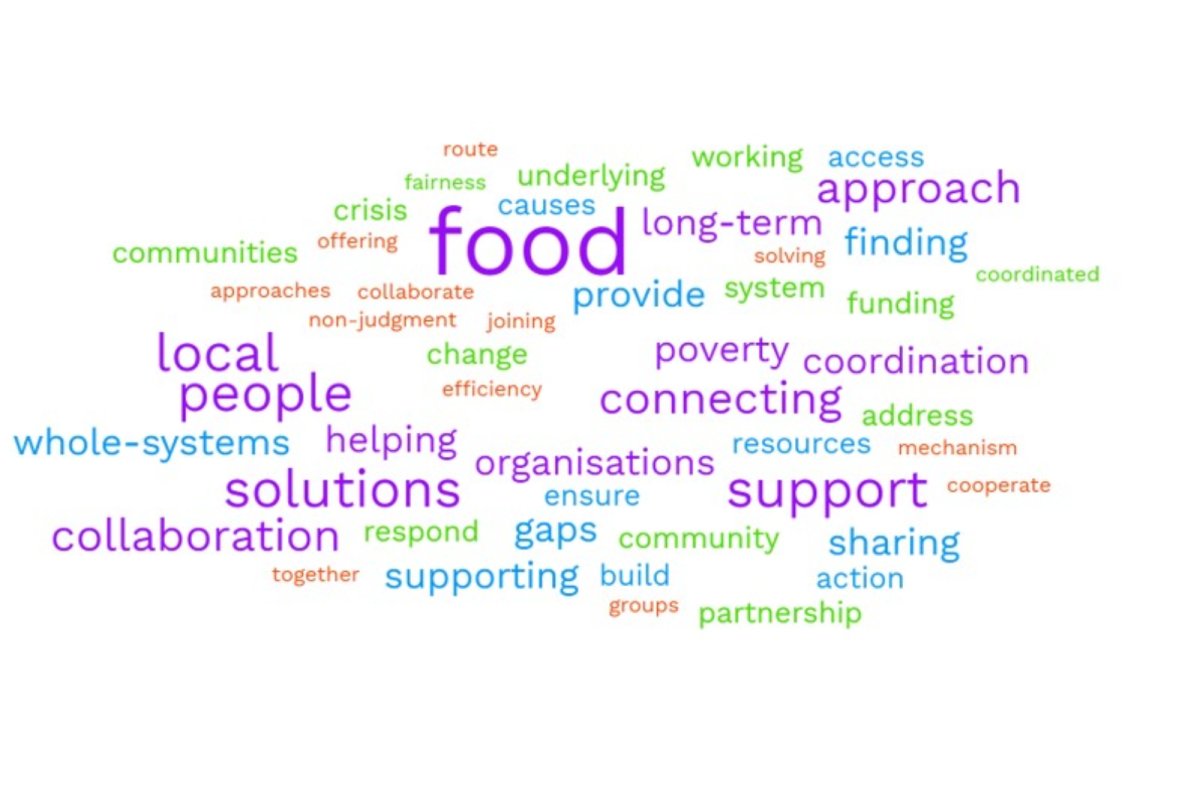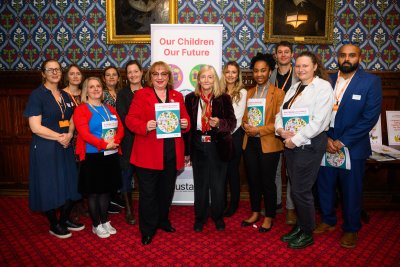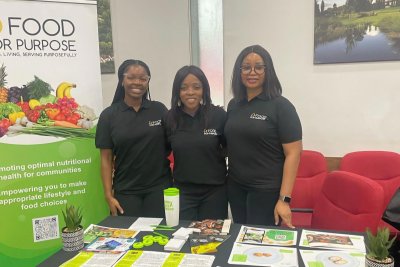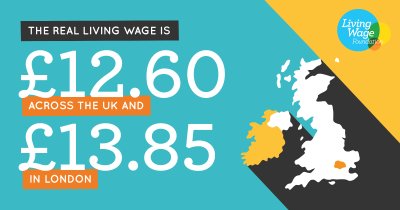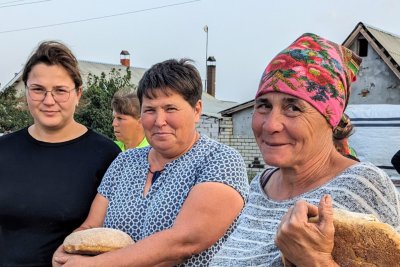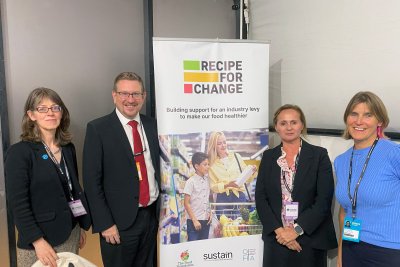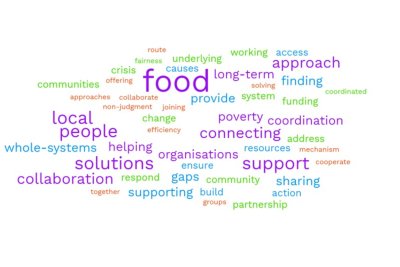 Role of food partnerships in the cost-of-living crisis. Credit: Sustain
Role of food partnerships in the cost-of-living crisis. Credit: Sustain
How are food partnerships taking action on the cost of living?
With food inflation reaching 16.4 per cent and one in four households with children experiencing food insecurity, many food partnerships are planning for an anxious winter ahead and seeking to understand their role during the crisis.
Food partnerships have demonstrated how their uniquely joined-up approach made for better emergency food responses during the Covid pandemic. It was hard work though; many food partnerships and food organisations feel exhausted by their efforts. Yet once again they are stepping up, responding to huge demands arising from the cost of living and its knock on effect on food insecurity. Here, we summarise in ten points what we learned from a webinar in November 2022 on the role of food partnerships and practical examples of action they are taking.
1. The situation is very difficult for people with the lowest incomes
The Joseph Rowntree Foundation recently set out the multiple pressures on these lowest income households currently, using phrases like ‘deep poverty’ and ‘destitution’ that are applying to more and more people. But the cost of living crisis is not a ‘new’ phenomenon - as Cambridge Sustainable Food pointed out, it is the result of real term cuts to benefits and wages over the course of several years.
Pre-pandemic, there has been a deepening of poverty in the UK for lone parents, large families, disabled, workless, and those from ethnic minority backgrounds. Inadequate social security has been a key driver of deep poverty and destitution. Households became worse off due to the deepening debt and arrears accumulated during the pandemic and adjusting to cuts to Universal Credit after an uplift during the pandemic. Three quarters of low-income households (seven million) are going without more than one kind of essential like food, a warm home or toiletries. This is not a problem solely for those out of work, but also impacts households who are subject to deductions from their benefits, Black, Asian and Mixed ethnicity households, working age households (especially young ones), large families and lone parents and those struggling with loneliness or mental health.
2. Food partnerships are key to taking action locally
We asked those participating in the webinar what is the role of partnerships in the cost-of-living crisis. The responses are captured in the word cloud above, and have a particular focus on collaboration, coordination, and seeing the bigger picture or taking a whole systems approach to food.
3. New partnerships are forming
Food Partnership approaches can harness new and in some cases unusual partnerships, bringing together local resources to be most effective. Blaenau Gwent Food Partnership, for example, is hosted by Tai Calon, the biggest social housing organisation in the area, which is in one of the poorest local authority areas in Wales. Being hosted by a housing association has helped bring in further resources with regards to tenant outreach and they recommend other food partnerships develop strong links with local housing associations and build capacity within a wider network.
4. Funding is out there
Food partnerships can lead fundraising to fund cost of living measures. Both Cambridge Sustainable Food and Brighton & Hove Food Partnership have successful crowd funders under way; and many food partnerships have influenced local funding allocations such as how the Household Support fund is distributed.
Brighton & Hove Citizens Advice and Brighton & Hove Food Partnership (and city emergency food providers) have teamed up and, with support from Brighton & Hove City Council have launched the Brighton Hove Cost of Living Crisis Fund. The donations will be split with 60 per cent going to provide help with fuel poverty and 40 per cent going to pay for emergency food. The council is encouraging everyone that wants to waive their council tax rebate to donate to that fund instead. By November 2022, it had raised nearly £50K.
Inspired by Brighton, Cambridge Sustainable Food set up their own Cost of Food and Living Campaign, a city-wide appeal to raise funds to help frontline workers in 13 existing community food schemes to provide ingredients directly to vulnerable households, as well as slow cookers. It raised £15K to date and council is match funding the crowdfunding total.
5. Take opportunities to increase produce donations
Food partnerships can also increase access to produce, particularly fresh healthy produce, helping to meet shortages in surplus food and improve quality and sustainability of emergency food.
In Cambridge, CoFarm, a farm set up during the pandemic, donates nearly all their produce to emergency food response going through hubs weekly. It is run mostly by volunteers which dedicated 10,000 volunteer hours last year alone. They have donated eight tons of food last year. ‘Grow a Row’ type initiatives, where allotments, community groups and others grow extra and donate to food projects resulted in another 1.5 tons of produce. Finally, the Co-Veg field, a donated piece of land from a local farm contributed another 0,5 tons of produce. Lots of beneficiaries appreciate fresh produce, with the only issue being recognizing unusual vegetables grown through these projects.
Blaenau Gwent does not have a tradition of community farms or market gardens but through small pots of funding they have seen some great projects spring up. For example, a woodland group received funding to start a food growing project. They have since produced Blaenau Gwent’s first ever veg box scheme delivered to a food insecurity project, providing low cost veg boxes in the community and they accept Healthy Start cards.
6. Pilot new approaches that lead to new investment
In Blaenau Gwent, the food partnership supported a pilot project to access funding from the health board for their slow cooker project aimed at boosting vegetable intake. The success of the project has seen a £1.8K pilot turn into a £12K project using other funders to serve a much larger area.
7. Relationships with councils are key (and happen in different ways)
Brighton & Hove have had staff embedded deep within the council, which has helped build strong relationships. During covid, a ‘food cell’ structure was created in the council, bringing together council departments including housing, public health and others, alongside others such as housing associations. This structure works well to address issues raised by the Emergency Food Network and gives a direct line to influence decision making to voluntary organisations working on ground. Other examples include:
- Cambridge Sustainable Food have set up their own food emergency network in the form of a food poverty alliance and are working closely with the city council.
- Blaenau Gwent Food Partnership plays a key role in administering local authority funding by identifying which projects can benefit, building capacity among CVS partners, as well as reaching out to new groups to guarantee good geographical coverage of projects and interventions.
8. Warm spaces can link to food
As Blaenau Gwent said, warm spaces are now a thing, and they link to food. Sometimes councils provide these e.g. through libraries, and in their case this is through Welsh government.
In Cambridge, the council has four community spaces serving breakfasts and funded an additional 38 warm spaces projects with £1k grants to pay for food. Even though small, grants of this magnitude with light reporting requirements go a long way with CVS organizations. ‘Cost of Living Roadshows’ are also a new feature in low income areas of the city. They are one stop pop-ups providing advice on debt, support under the Household Support Fund, paying for utilities, Healthy Start Vouchers, etc.
9. Small things can make a real difference
For example, parking dispensations to volunteers working in emergency food provision are provided by the council in Brighton and Hove after they realised the need via the food partnership.
10. National policy change is required to create impactful solutions
Solutions to the crisis require policy changes from government, meaning they are out of direct local control. The Joseph Rowntree Foundation emphasised the current package of Government support (e.g. council tax rebates, Energy Bill Support Scheme, six month Energy Price Guarantee, one-off payment for means-tested benefit recipients, pensioners and disabled people and Household Support Fund) still leaves a gap of £450 this year for people on means-tested benefits. They are calling for:
- People need help this winter: Bring forward uprating of benefits
- Do not cut benefits: Uprate in the usual way in April 2023 (with prices, not earning)
- One off support payments are not a substitute: when inflation subsides, prices won’t fall
- Reform Universal Credit: so people can at least always afford the essentials
However, some food partnerships are playing a role in coordinating lobbying on these issues. In Brighton & Hove and Cambridge, emergency food networks have written to government on several occasions.
Next steps
In the Autumn Statement the Government has announced £1 billion of funding to enable the extension of the Household Support Fund in the next financial year 2023/24. Some councils have already worked with food partnerships around agreeing priorities for this money and/or used a portion of the money to support food partnerships. This latest round of funding lasts a year rather than six months, enabling a more strategic approach. This is a pivotal moment for food partnerships and councils to work together to invest in long-term solutions to food poverty. Here are just a few of the steps we will be taking.
- In response to support at the webinar, the Sustainable Food Places (SFP) programme will continue to support food partnerships around effectively representing their local voices nationally, continuing the approach we started at the day of celebration and action.
- As a network, we call for a Food Bill in every nation and a food plan and food partnership in every local area. We see this as absolutely fundamental to ensuring an effective and systemic response to food poverty, amongst the other pressing issues facing our food system today.
- SFP will continue to compile case studies showcasing best practice. See also Food Power’s archive of publications and case studies and the Local Government Association cost of living hub for examples and resources around programmes assisting households who are unable to afford sufficient food for a healthy diet.
Listen to the webinar ‘The cost of living and local action by food partnerships’
This was a follow up to a webinar and blog earlier in 2022 which looked at how food partnerships can keep a focus on an emergency response whilst also keeping a ‘whole systems’ approach which thinks about food sustainability and long term ‘upstream’ solutions.
Sustainable Food Places: The Sustainable Food Places Network helps people and places share challenges, explore practical solutions and develop best practice on key food issues, so if you are working to drive positive food change or are interested in developing a programme, please do get in touch.
Sustain
The Green House
244-254 Cambridge Heath Road
London E2 9DA
020 3559 6777
sustain@sustainweb.org
Sustain advocates food and agriculture policies and practices that enhance the health and welfare of people and animals, improve the working and living environment, promote equity and enrich society and culture.
© Sustain 2024
Registered charity (no. 1018643)
Data privacy & cookies
Icons by Icons8
